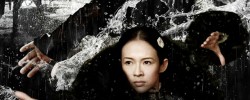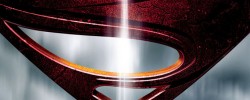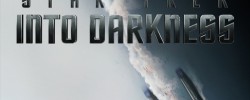
Review: The Conjuring (2013)

Cast: Vera Farmiga, Patrick Wilson, Lili Taylor
Director: James Wan
Country: USA
Genre: Horror | Thriller
Official Site: Here
Editor’s Notes: The Conjuring opens in wide release today. For another perspective on the film, see Julian Wright’s review.
When it comes to contemporary horror, few filmmakers have the broad commercial appeal or the genre defining (or redefining) influence than James Wan, the director of Saw and Insidious, does. With Saw, Wan and his screenwriting partner, Leigh Whannell, virtually invented a new horror sub-genre (dubbed “torture porn” by its detractors). With Insidious six years later, Wan consciously changed direction, going old school and eschewing the blood and gore typical of Saw’s sequels and its many imitators for a more subtle, nuanced approach that depended more on what the audience didn’t see and well calibrated shocks and scares that also furthered Insidious’ family-centered narrative. Wan’s latest film, The Conjuring, a 1970s-set supernatural tale, arrives in multiplexes just in time to offset the lingering aftereffects of yet another summer crammed with risk-averse sequels, remakes, and reboots (give a take an R-rated comedy or two and, most notably Pacific Rim).
The Conjuring, a 1970s-set supernatural story, arrives in multiplexes in time to offset the lingering aftereffects of another summer crammed with risk-averse sequels, remakes, and reboots…
There’s little, if anything, that can be described as novel or new horror-wise in The Conjuring, primarily due to The Conjuring’s origin as an early 1970s case actually investigated by Ed and Lorraine Warren, celebrity paranormal investigators and ghost hunters. Their files form the basis for The Conjuring and, if commercially successful, for additional stories. The Conjuring actually opens with one, unconnected case involving a possessed doll (a Wan specialty) that follows its owners wherever they go. The Warrens, played by Patrick Wilson and Vera Farmiga, respectively, treat the story of the possessed doll as real and act accordingly to remove the doll from its current owners. They store the doll in a special room in their house alone with other possessed objects or talismans they’ve acquired during their investigations into the paranormal. The room or museum also serves dual functions, first in subsequent scenes involving the doll, but more importantly as a potential resource for additional investigations and thus, sequels to The Conjuring.

The prologue also tips the audience to method behind Wan’s seeming madness. His take on that story and the subsequent one are grounded in a recognizable reality (one, thankfully, with minimal, momentum-draining CG). On a narrative and thematic level, the prologue also tells us that The Conjuring will unfold through the prism of Judeo-Christian religion, specifically Catholicism. Both Ed and Lorraine Warren are true believers. They believe in a Christian God, but importantly for purposes of The Conjuring, in the Devil, in unclean spirits, and demons (other religions and other religious beliefs are not just immaterial, they’re illegitimate). Wan and his screenwriters, Chad and Carey Hayes, make a point of including one investigation that yields a supernatural result. Later, they make an additional point of the non-belief (or weak belief) of the family at the center of The Conjuring.
We meet that family, the Perrons, soon enough. A blue-collar, working class family, the Perrons come to the attention of the Warrens through the efforts of Carolyn (Lili Taylor), the Perron matriarch. From what we learn, Carolyn, her husband, Roger (Ron Livingston), and their five daughters, Andrea (Shanley Caswell), Nancy (Hayley McFarland), Christine (Joey King), Cynthia (Mackenzie Foy), and April (Kyla Deaver), moved into a large, isolated Rhode Island farmhouse. The first day they discovered a hidden cellar crammed with antiques and detritus. On the second day, their dog dies under mysterious circumstances. At night, a hidden presence begins to stalk and harass the girls, initially with some mild blanket or leg pulling and later through more physical means. Carolyn wakes up each morning with fresh bruises, but she doesn’t know she got them. And it only gets worse from there, as the spirit or spirits become increasingly aggressive.
Wan once again proves adept at creating and maintaining tension and suspense, both in individual scenes and throughout the film. And he does it without relying on truckloads of blood or gore…
Based on that evidence, the Warrens agree to investigate. They bring in video and audio recording equipment Poltergeist-style, but the attacks persist in frequency, duration, and violence, as do the necessary revelations about the farmhouse’s troubled history and the effects, natural and supernatural, exposing that history has on the Perron family. Anyone reading between the lines – or rather reading between Wan’s creepily effective set pieces – could and would surmise that the Perrons, isolated and alone, have slipped into a form of mass hysteria and/or collective hallucinations. Whether you decide on a natural or supernatural explanation, however, it’s immaterial to The Conjuring’s subtext, a subtext that seems to suggest a faint, but no less visible strain of misogyny, especially in the late-stage revelation of the source of the haunting, or at the very least, a fundamental distrust and/misunderstanding of women.
Subtext aside, there’s little doubt that The Conjuring fundamentally works as a horror film, delivering not just shocks and scares with unrelenting frequency, but on the level of mood and atmosphere. Wan once again proves adept at creating and maintaining tension and suspense, both in individual scenes and throughout the film. And he does it without relying on truckloads of blood or gore (cf., the Evil Dead remake). He’s content with subtlety guiding the audience through their fears and anxieties, specifically of supernatural home invasion when the concept of safety (e.g., closed windows, locked doors) ultimately means nothing. Of course, that’s also a testament to the strengths inherent in Chad and Carey Hayes’ script. It treats the Warrens and the Perron family with complete, camp-free seriousness. Even the attempts at humor, mostly through the Warren’s assistant, Drew (Shannon Kook), and off-duty police officer, Brad (John Brotherton), function to give a short breather before the shocks and scares begin anew.
Related Posts
![]()
Mel Valentin
![]()
Latest posts by Mel Valentin (see all)
-
Bryan Murray































